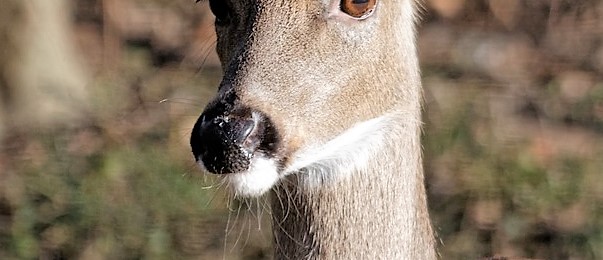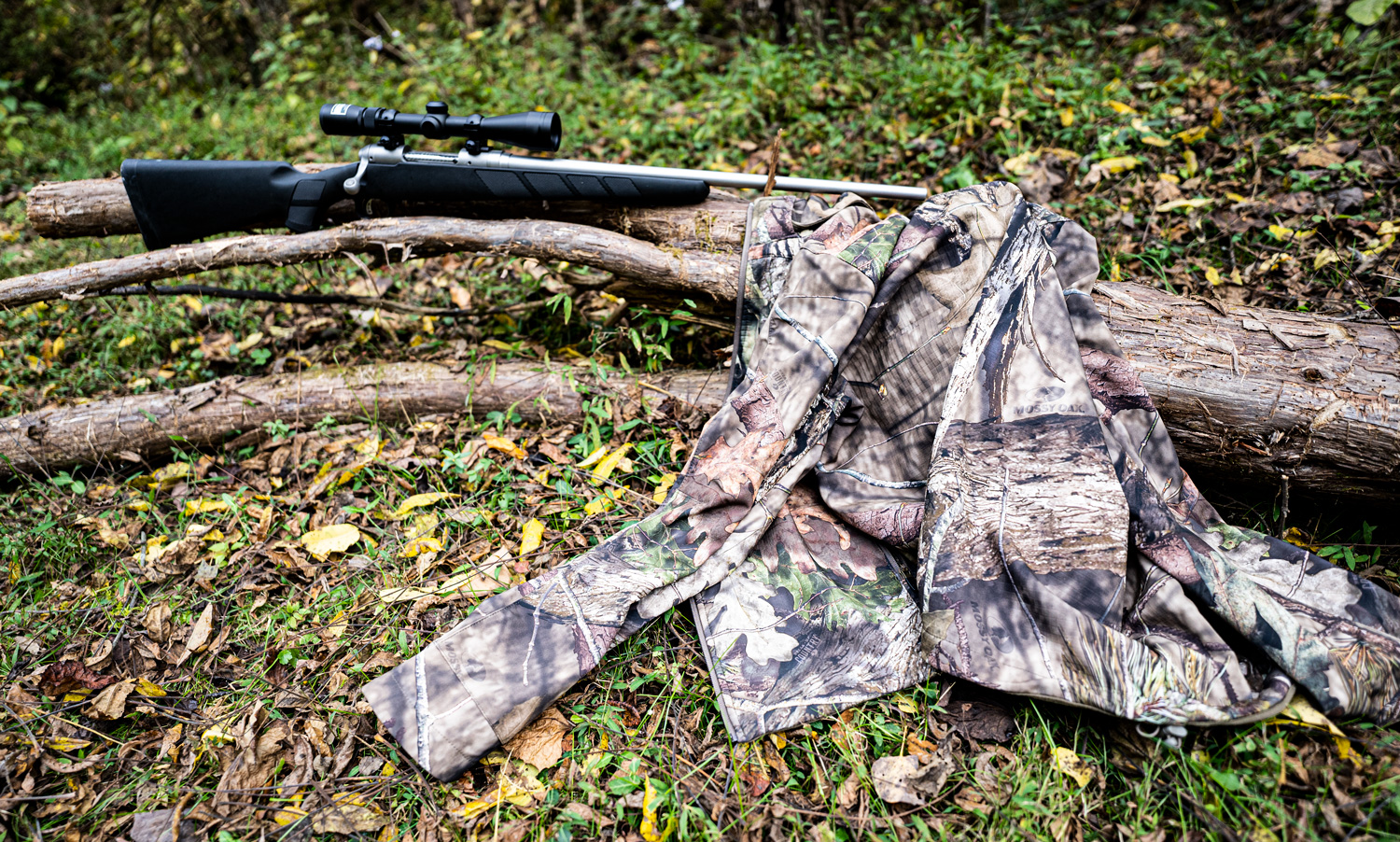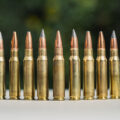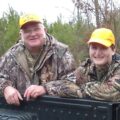Whitetails have magnificent noses, and they know how to use them. It’s hard to get anything by those sniffers. Research performed at Mississippi State University’s Deer Lab discovered a deer’s sense of smell can be up to 1,000 times more sensitive than the average human’s. With thousands of scent receptors, a deer’s nose can pick […]
Whitetails have magnificent noses, and they know how to use them. It’s hard to get anything by those sniffers. Research performed at Mississippi State University’s Deer Lab discovered a deer’s sense of smell can be up to 1,000 times more sensitive than the average human’s. With thousands of scent receptors, a deer’s nose can pick up and sort out up to six different smells at one time.
Those noses aren’t short range weapons, either. A whitetail deer can perform this feat of sensory magic from mind-boggling distances. On a humid day with mild temperatures and a light breeze, a big buck can detect human scent from more than a half mile away.
So how does a hunter defeat that sensitive whitetail schnoz?
The short answer: You can’t.
But before you throw in the towel and hock your hunting gear, there are a few basic things you can do to help you stay in the game with scent control. Just be aware that no matter how carefully you prepare or how well you play the wind, you’re still liable to completely booger that impressive wall-hanger. His nose game is just that good.
Scent Control Basics
Step One: Controlling Human Scent
“Humans have been hunting since the beginning of time. Our ancestors didn’t need gimmicky scent-control products to hunt deer.”
I’ve heard this sentiment uttered more than once around a campfire, and it is mostly true.
Our grandfathers and great-grandfathers didn’t need to buy special scent control sprays or fancy cover scents to kill their deer. However, people of centuries past were not bathing in perfumed body washes or using shampoos with added fragrance. Personal hygiene products were a lot simpler (and more natural) in Grandpa’s day. Grandpa probably washed in basic, good ol’ fashioned soap, and Granny washed his clothes in the same thing.
A deer can get a brief whiff of modern day shaving cream with its concoction of chemical ingredients and artificial fragrance and he immediately knows that scent does not belong in his woods. The aroma of hand lotion, mouth wash, and antiperspirant can only mean an intruder has wandered into his living room. Those unwelcome scents are like neon signs flashing in the forest: DANGER!
It is nearly impossible for the modern hunter to get away with what Grandpa did. So, here is some basic information on scent control for the modern hunter.

Personal Hygiene
Scent control must start from the skin out. You have to be clean, but ditch the conventional personal care products. It is darn near impossible to find soaps, deodorant, shaving cream, and other products that don’t smell like chemicals, even if there isn’t any added fragrance.
Soap/Shampoo
Lucky for hunters, there is a whole industry dedicated to hiding us from whitetail nostrils. Instead of spending time poring over labels and ingredient lists on the bath and body aisle, head for the outdoors section. Scent Killer, Scent-A-Way, Primos, and Dead Down Wind all make body wash/shampoo without added perfumes. These products clean your skin without leaving behind a chemical smell.
Always shower or bathe before a hunting trip. After lathering up with some scent-free soap, rinse for at least five to ten minutes. Make sure to dry yourself with a towel laundered (in scent-free laundry soap) with your hunting gear. Drying off with a Tide-scented towel is only going to undo all your hard work.
Deodorant
While you’re in the outdoors section, look for other products, too. Commercially advertised deodorant is important for controlling human sweat, but can often be full of chemical fragrance. Purchasing one made specifically for hunters will ensure the product helps control perspiration without using perfume to cover body odor.
During hunting season, you will also need to stay away from other products with foreign scents that will follow you up your tree stand. The smell of hand lotion, lip balm, hair gel, and chewing gum has no place in the woods. Even when you aren’t hunting, you may want to put those products away until the season closes. You don’t want any lingering odors clinging to hair or clothes to mess up a chance-of-a-lifetime shot. (Ladies will also want to avoid make-up, and scented feminine hygiene products.)
Your Mouth/Teeth/Breath
Just a quick note here about breath smells, too. Your breath smells, like it or not. So a scent reducing face mask can go a long way to keep that scent from drifting out to meet deer’s noses. Use a scent-free toothpaste and mouthwash to help control odor-creating bacteria. You can also brush with baking soda and peroxide on hunting days. This will kill odor-causing bacteria without leaving behind a chemical smell.
Scent Control Clothing
Like with personal hygiene products, conventional laundry products are loaded with chemical smells. Once again, you can head for the outdoor section. There are several laundry products engineered specifically for scent management. These products can be pricey, however. If you don’t want to fork out the extra cash, try washing your hunting gear in good ol’ fashioned Borax. That’s how Granny washed Grandpa’s gear. Just follow the directions on the box.
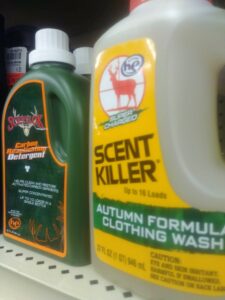
Thorough washing is also an important step for newly purchased hunting clothes. New clothes often smell like formaldehyde or other pungent chemicals from the manufacturing process. It usually takes more than one cycle to wash out that chemical stench.
If you use dryer sheets on your regular laundry, avoid the dryer for your hunting clothes. The scent of dryer sheets can linger in the dryer tumbler long after the cycle has finished. Line drying is always a better option for hunting apparel. However, you’ll want to make sure your clothesline isn’t downwind of your neighbor’s barbecue.
How to Store Your Hunting Clothes
Fabric acts like a sponge, soaking up odors it comes in contact with. You don’t want to undo all you laundering efforts. So, once you have your hunting clothes as scent-free as possible, you want to take steps to keep it that way.
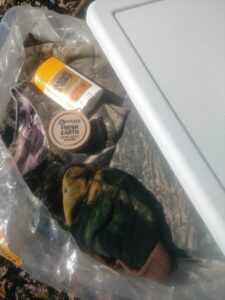
If you’re willing to dole out a little extra cash, you can buy activated carbon bags like the ones from Tink’s or ScentOut. Made of a sturdy, non-woven synthetic material with an activated carbon lining, these bags not only protect clothes from soaking up smells from your home or truck, they also help neutralize odors already on your cloths.
You can also use a high-tech bag with an odor eliminating ozone dispensing unit.
For extra protection, you can store your bag of hunting gear inside of a hard plastic storage bin. This will act as an extra barrier between your clothing and outside smells.
Once you have properly stored your hunting gear, leave it there until you reach the field. You shouldn’t be pumping gas or frying bacon in your hunting clothes. Keep them stored in your container until you’re ready to enter the woods.
Wait to put on your outermost layer until you’re ready to step into the woods. If possible, change outside of your vehicle. This is an important detail. Your car is full of foreign smells, from motor oil to air fresheners. You want to leave those scents in your vehicle, not carry them, clinging to your clothing, into the woods with you.
Your hunting boots should be the last thing you put on. Don’t slip them on until you’re ready to hike to your hunting stand. Otherwise, every place your feet hit the ground could broadcast an intruder alert to every whitetail in the area.
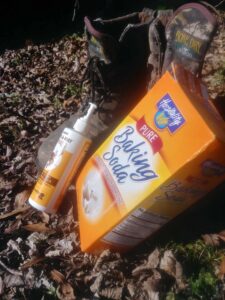
Scent Elimination or Scent Control Sprays
For an added boost to your scent control regimen, you can use a scent eliminator spray. Featuring bio technology that neutralizes human odor, a quick spray of Scent-A-Way or a similar elimination spray is an extra boost to help keep body odor at bay.
I live in the Southeastern United States. Bow season here is still pretty warm. There is no way to hike in with long sleeves and a tree stand on your back and not work up a pretty good sweat. Once I’m in the tree, I spray down my underarms, my crotch (sorry, there’s no delicate way to put that), and around my hat band. Those are the prime places that send out scent like ripples on a pond.
Skeptical that these sprays are just hype marketed to over-eager hunters? You can always cover yourself with baking soda (don’t forget your feet and your hunting boots) to fight the bacteria that causes body odor.
Carbon Clothing
Technology has come a long way since Grandpa started hunting. This is especially apparent when it comes to advances in hunting gear.
Carbon-activated clothing like that manufactured by Scent-Lok and Under Armour can effectively block 96- to 99-percent of odor compounds and essentially 100-percent of the surrogate body odor compounds. In basic, non-science terms, these high-tech products trap your human odors and keep them from wafting all over your hunting area.
The effectiveness of these products is up for debate. Some hunters swear by them. Others not so much.
An activated carbon base layer could cost you $150 or more. If you choose to invest in this high-tech hunting gear, be sure to follow specific care instructions. Otherwise, your clothing could lose its scent-blocking ability.
Step Two: Using Cover Scents
You can follow every “rule” there is to minimize your human scent, but there is nothing you can do to get rid of it entirely. You are, after all, a human, and humans smell like humans, even under activated carbon clothing sprayed down with scent elimination products.
However, there is still one strategy to help keep those keen sniffers from smelling you in the woods.
Use a cover scent. There are plenty to choose from, everything from natural animal urine to earth and pine scents, But be careful. You don’t just want to use cover scents willy-nilly. Here are just a few important cover scent guidelines to help increase your chances of seeing that once-in-a-lifetime buck.
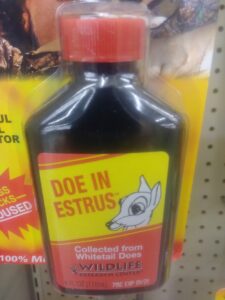
Choosing the Right Cover Scent
Deer know what smells are natural to their habitat, and they are not easily fooled. It is important to use a cover scent that occurs naturally in your hunting area. For example, you don’t want to use a cedar cover scent in an area filled with white oak and red maples. While cedar is a naturally occurring scent, it isn’t natural to all areas, and whitetails are well-aware of what scents are native to their living space.
Also, be careful using scents such estrus urine or buck tarsal glands. Deer aren’t dumb. That monster buck you’ve been watching all summer knows those smells accompany the rut. During the rut, those scents could lure a big one into shooting range. However, during the rest of the year, rut scents are foreign and could send deer running in the opposite direction.
Using Natural Scents
Scents from a natural source are more likely to fool a buck than any synthetic product, so use them to cover human smell whenever possible. It isn’t against the rules to use resources in the natural environment. You don’t need a special product with a big marketing team behind it to be successful.
If wild mint grows near your favorite stand, crush some leaves and rub them on your hunting clothes.
You can also use tree branches and leaves. Fresh snapped pine branches are a better cover than any bottled pine scent. I like to store a pine branch in with my hunting clothes (especially since I most often hunt in woods full of eastern pines). A fresh branch off any variety of tree will work, as long as that tree grows in your hunting area.
Hunting With The Wind
The tiniest drift of human scent can travel a serious distance on the lightest of breezes in a short period of time. The wind can be a hunter’s best friend or worst enemy, either wafting human smell away from or toward an incoming buck. That is why the serious deer hunter learns to use the wind to his or her advantage.
Pay particular attention to wind speed and direction, as well as thermal air patterns, before planning your hunting position. A little preparation and forethought can increase your chances of seeing deer while staying invisible to those fine-tuned nostrils.
It may be impossible to beat a deer’s nose completely, but by using these scent control tips and techniques, you can certainly help swing the odds in your favor.
Happy hunting.

